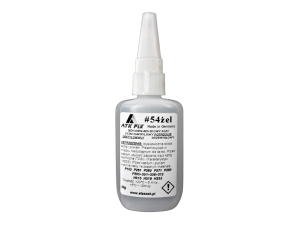Contact and solvent adhesives
Contact adhesives These are products that, in most cases, work by evaporating the solvent, leaving a sticky layer to which the glued material is pressed. There is also a second category, ie adhesives, eg ATK FIX 54, in which there is no evaporation reaction but no thermal reaction during pressing. Solvent-based adhesives Adhesives that work by evaporating the solvent, but here we also have a division. The first group is solvent-based, which are contact adhesives, e.g. ATK 901, and the second, such as ATK PMMA or ATK PVC, which act between surfaces by dissolving the bonded material. Main applications: veneers, veneers, laminates - we use U800 glue, however, you will get the highest strength when using ATK 021 glue wood and derivatives, we use U800 contact glue, but for fast gluing, choose ATK FIX 54 rubber with yourself and other materials also with metal, choose the solvent glue ATK 901 plexiglass and polycarbonate - ATK PMMA 4 or 16 pvc flexible, i.e. tarpaulins, banners and inflatables, are glued with ATK B170. hard pvc, i.e. sewage pipes - ATK PVC Where not to use? There is a simple principle here, i.e. where the solvent is not able to overflow the material, there will be little or no bonding; e.g. metals or glass. Contact adhesive for sponge with other materials - is it the best? These types of adhesives are good if we glue a sponge with each other or with wood and some plastics, they work on average for bonding with metals, concrete or glass then use much stronger adhesives such as ATK 812, ATK 901 or GB 10-10. Myths about solvent and contact adhesives They are one-component adhesives - mistake. A large part is one-component, but if we "add" the second component, we strengthen the joint, and for example, ATK 901 works only as a two-component contact adhesive for wood If we want to glue wood with wood, two-component adhesives of the ATK 021 type are better, except for gluing wood with a sponge etc. then the contact passes the exam Solvent adhesives leave a dry joint after evaporation Applies only to solvent adhesives with additives, some adhesives such as ATK PMMA 4 evaporate completely, overshadowing the material Widely use of this type of adhesives These types of adhesives are intended for selected materials with a strictly defined application, they do not have universal application, because more and more often the materials we glue are made of metal, aluminum, and plastics with irregular shapes, and then the best option is two-component adhesives Contact adhesive for polystyrene As a rule, polystyrene with itself and other materials is better glued with a two-component non-destructive adhesive xps area and eps, e.g. ATK 021, especially since the glued materials are never perfectly adhering and then the contact adhesive does not work. Contact adhesives are strong Unfortunately, they are not strong adhesives if we glue a weak material such as: foam or tarpaulin, but their strength is usually 2N / mm2, except for ATK 901 adhesive for rubber 8N / mm2; and in the case of glue, e.g. SA 1-15, it is 30N / mm2.






